After launching their award-winning site, Kirio re-engaged Rational to bring our interface design expertise to their consumer app. Kirio is a robust management hub, offering centralized administration of smart home automation for new construction. Kirio's innovative engineers made it possible to interface with hundreds of devices and systems, using a protocol-neutral platform.
The first part of my process brought the user back into the spotlight. As a new product in a hot tech space, internal conversation was dominated by features. The Kirio system is remarkably capable, and I focused on empathy to reconnect and define core experiences. We were entering our users' private sanctuary, where they were already master of their domain.
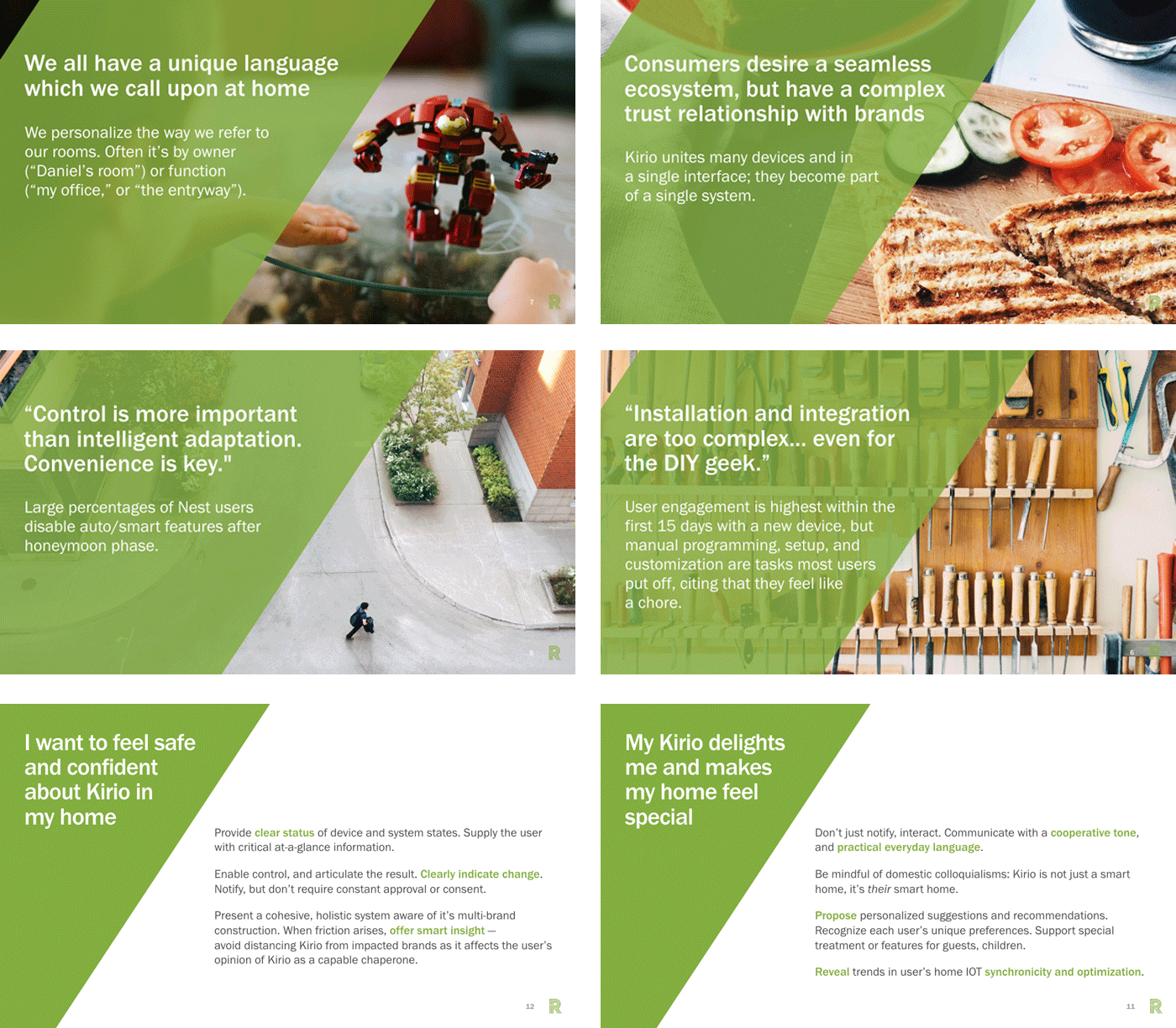
Kirio is focused on promoting synchronicity and efficiency while balancing comfort, convenience, and security. The challenge was to define what the app would and wouldn't allow users to do. Much of Kirio's powerful work happens without user administration. I strived to champion the system's abilities while not oversimplifying or sacrificing depth. This work led to a structure which progressively allowed for complexity.
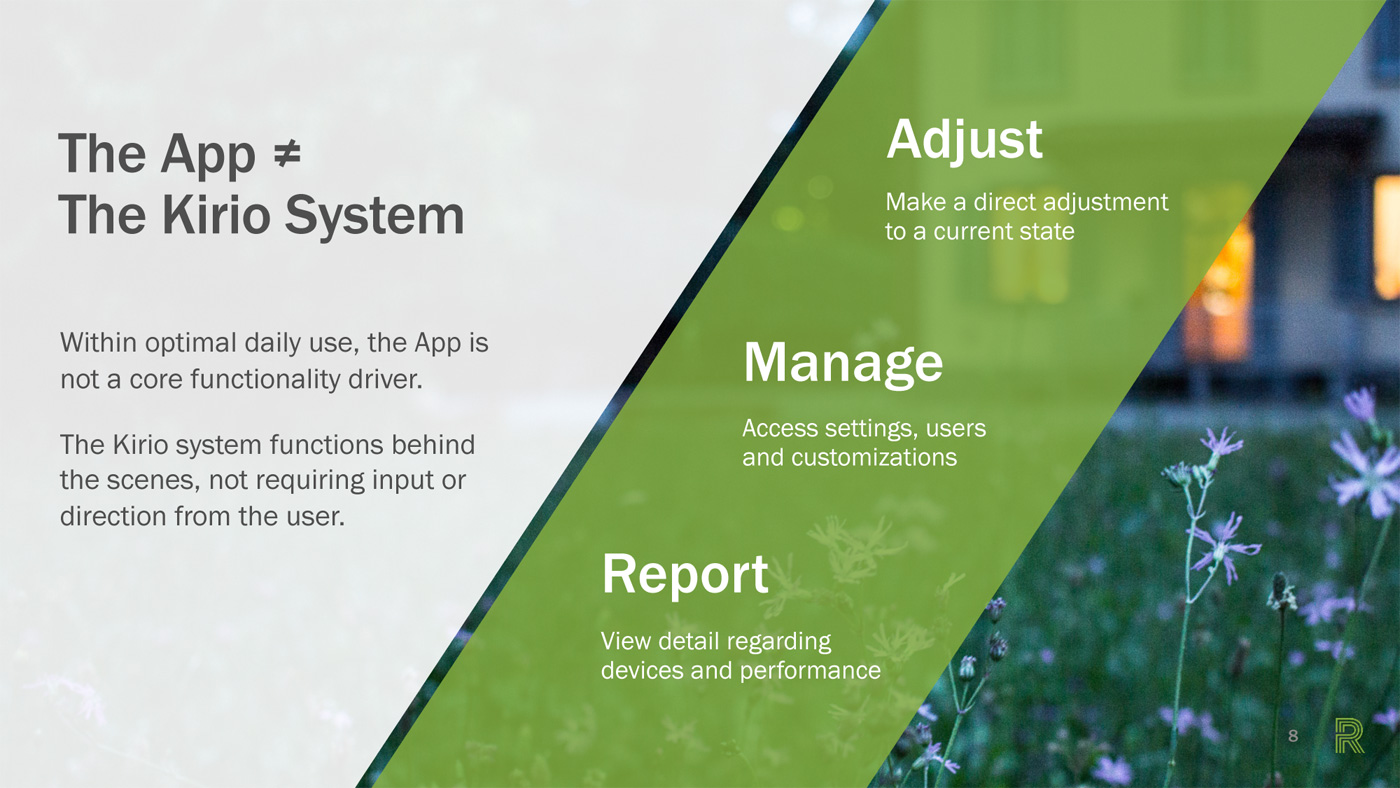
To begin, the structure of the app mirrored logic inherent to the engineering and development of the Kirio system. I reorganizing this format, simplifying to 3 main inroads aligned to our users' awareness of their space: proximity & space, time & activity, and appearance. While gathering insights, clarity emerged as to the higher expectation our users place on adminstrating security devices, and this was applied to the app structure as well.
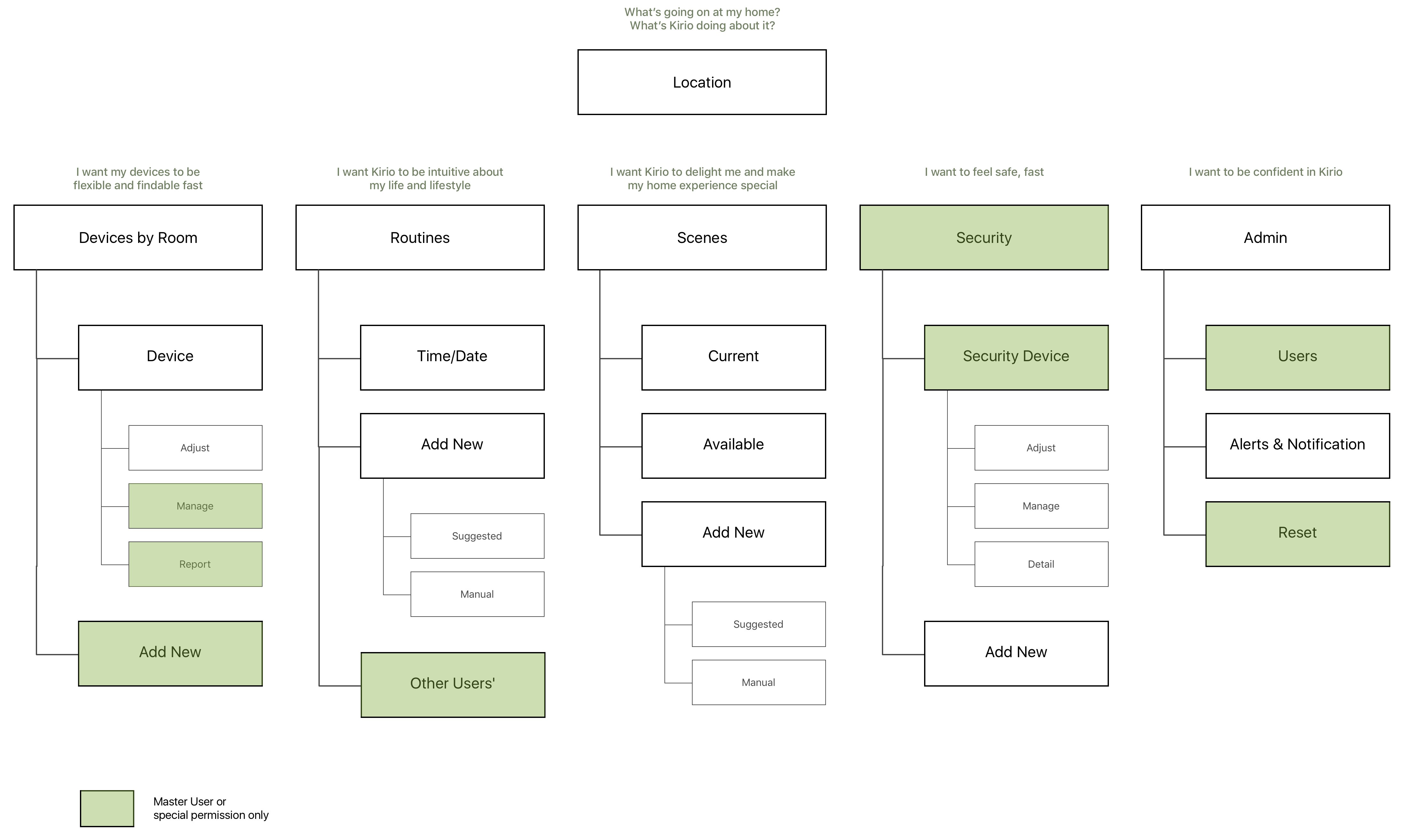
To better manage a progressive slate of options for control as users drive deeper into individual devices, rooms, or patterns, our solution sought to achieve user goals in about three taps. Device control options are already subject to cognitive challenges such as finding and unlocking our phones; locating and launching apps — focusing on sweeping changes and responding to user context became a decision driver.
Defining what being a "smart" device meant grew into a collaborative discussion with the system's founders. Within the app structure, I plotted possible areas for predictive interactions which could deliver this functionality without getting underfoot of users' home mastery. I explored conversational modes of onboarding users to select capabilities, as well as ways to naturalize the process of gaining familiarity with the system.
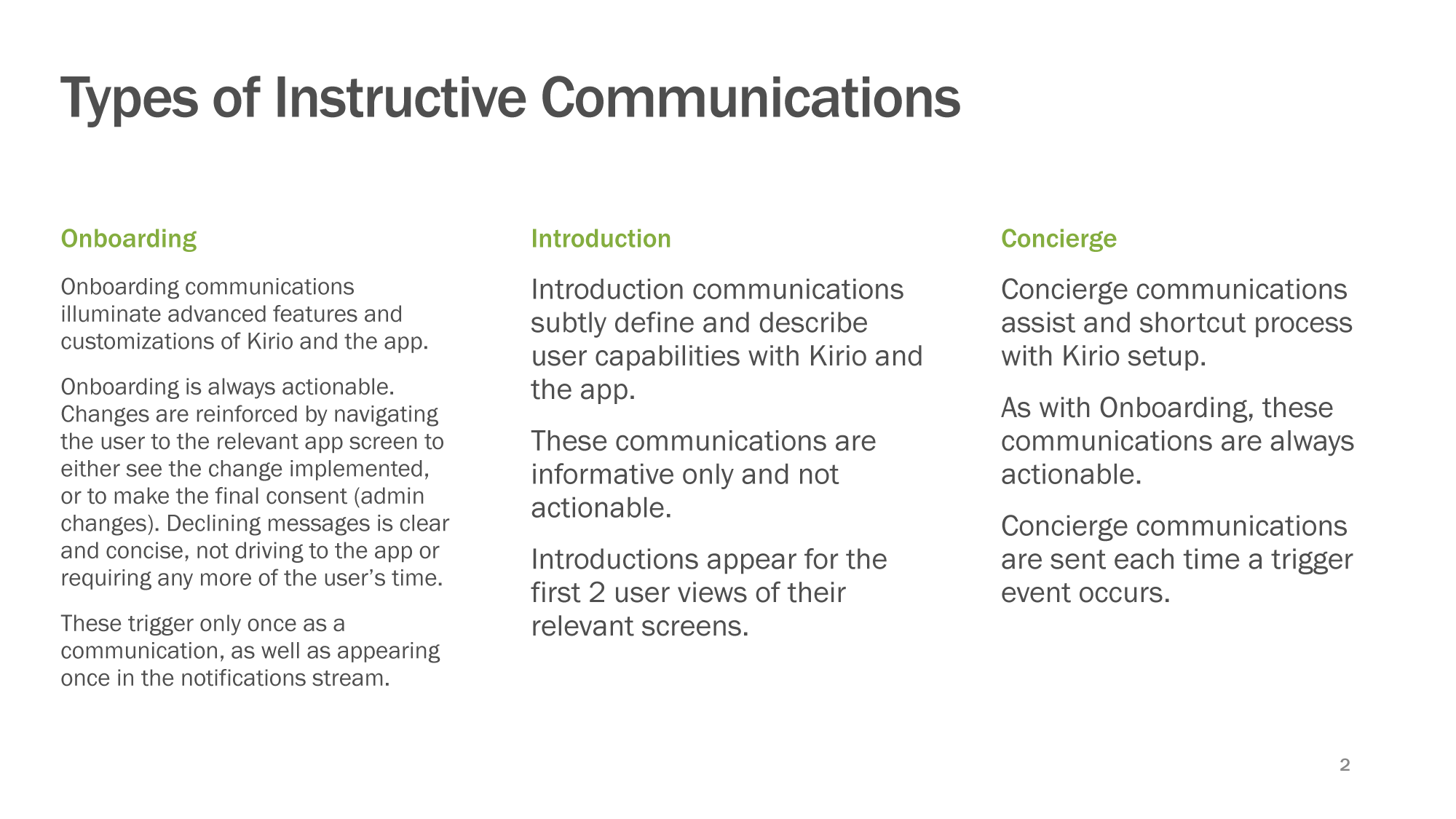

To create the final UI for the app, I partnered and supported the Rational design team. Components and device controls took form drawing inspiration from physical interactions as well as familiar digital formats, striving for intuitive solutions which would require less learning and analysis from our user.
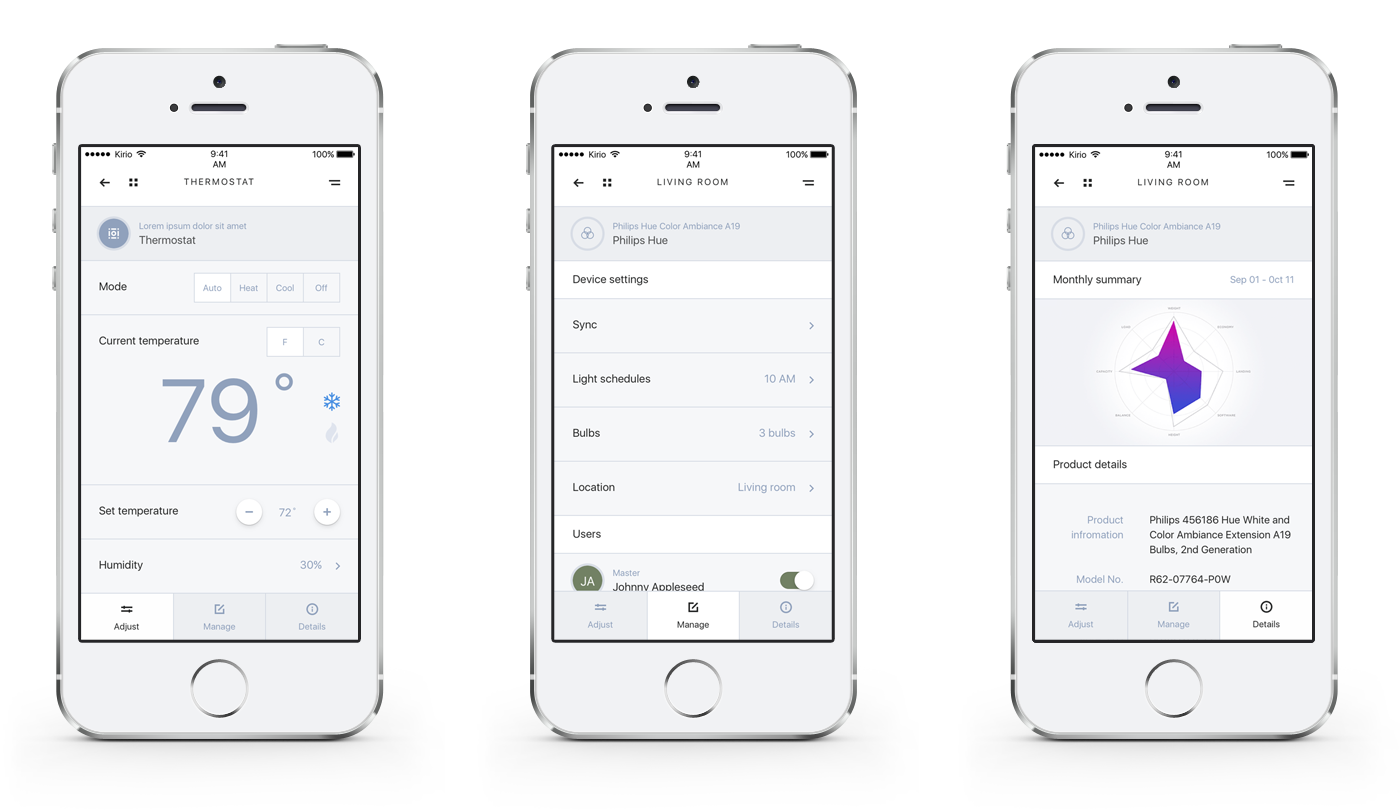
The domestic IOT space is absolutely fascinating — there was often not enough time in the day as I stayed up reading visionary and academic work investigating the deeper questions and responsibilites of working with smart devices. This project quickly rose to become a career highlight, with the thrilling challenge of both pioneering new solutions and adapting best practices.